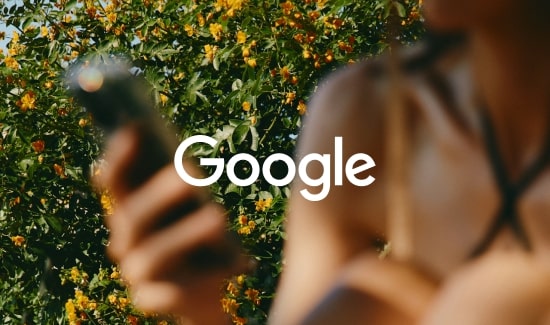What happens to tracking and measurement in a world without cookies?
Over the last couple of years, it’s become clear that cookies are headed for extinction. State-level and overseas legislation on data collection and browser privacy changes from Apple, Google, Firefox, and more have made it clear that marketers must reimagine data collection and usage practices in the face of increased consumer demand for privacy.
So what does that mean for tracking and measurement?
In this post, we’ll examine this question on two fronts: first, we will uncover the options emerging from major advertising platforms (Google and Facebook), and how those platforms are integrating with major unified marketing measurement (UMM) vendors Nielsen Attribution and Neustar to protect user privacy and allow greater insight into the cross-channel journey.
The current role of browsers and operating systems
First, let’s look at how browsers and operating systems are currently facilitating the collection of data. Browsers are still allowing first-party data cookies, but restrictions will be placed on vendors (e.g., Google and Facebook) that limit the window of first-party data usage to 1-7 days vs. 1-30 days. This isn’t great for remarketing campaigns, but that data can be pulled quickly for use in identity graphs (also referred to as ID graphs or ID resolution graphs), which we’ll get to in a bit.
That said, channels and advertisers are working to remove browsers and operating systems from the equation and rely on securely hashed identifiers created on the server side to facilitate the flow of encrypted data between information systems. (Hashed identifiers help unify user info across systems while keeping actual user identities private.) The idea of securely hashed identifiers should generally make people feel more comfortable – especially knowing that vendors like Google and Facebook, as well as attribution partners, are not facilitating data exports back to advertisers at this level of granularity.
How Google and Facebook are preparing for life after cookies
In short, Google and Facebook/Instagram (I expect more platforms to follow) are working toward using a deterministic model that removes dependence on cookies, browsers, and legislation. This measurement system will be available to all brands regardless of size and budget, which is significant because even brands with tiny marketing budgets will likely be advertising on Google, Facebook, or both.
In this model, Google and Facebook know who they’re serving ads to because those users are logged into Facebook, Instagram, or the Google product suite (think Gmail, Google Maps, Google Docs, etc.). They can also track actions like users clicking through ads to get to brand sites. Brands will likely get their email addresses when those users convert (whether for lead gen, purchase, etc.).
From there, instead of sending those email addresses, brands will hash the user data and then send it back to the advertising platforms, which can tie the data back to a conversion on your site. The sooner in the journey you can collect the email and hash it, the better, as you can then quickly connect to more upper-funnel actions that lead to conversions, think whitepaper downloads, value-driven incentives to sign up, etc.
In this model, brands will understand how many conversions they recorded, from which ads, and on which platforms, and they’ll know precisely how many users converted. (Note: this approach won’t solve multi-channel attribution since both advertising platforms will try to take the bulk of the credit when they deliver ads to the same user.) Although my opinion is that none of the advertising platforms would have chosen this direction without a groundswell of privacy-related demand, they should be happy because advertisers are now getting access to historically walled gardens in a privacy-focused way. They also get the PR boost of protecting user privacy while continuing to rake in advertising revenue.
All of this takes place without any cookies in play.
How unified marketing measurement survives in the cookieless world
Nielsen Attribution and Neustar are the most prominent UMM players who establish relationships with Facebook, Google, and other media platforms.
I’m hearing that Nielsen and Neustar enrich user data by building user ID resolution graphs (or using Tapad graphs). Ultimately, they will partner with Facebook, Google, etc., to bring media data into their clean-room environments and provide a view of data-driven attribution (fractionally attributing credit to multiple touchpoints) without giving back user-level data.
This means marketers won’t understand exactly which users engaged where on their paths to conversion, but it will enable marketers to understand the at-scale cross-channel journey meaningfully without individual user data entering the picture. Where today’s solutions allow advertisers access to user-level data with touchpoint timestamps and leave advertisers to connect the customer-journey dots, these emerging solutions will include data from walled gardens to integrate more touchpoints, including impression tracking, while protecting user privacy. This will give us clearer insights into channel performance, which has deteriorated over the past few years.
You’ll note a couple of factors in this approach: 1) we’re purely talking about measurement, not selling data; 2) the relationships between Nielsen/Neustar and the media platforms are possible because the UMM vendors are not backed by media, which keeps the relationships clear of conflicts of interest. The relationships offer huge value to Nielsen and Neustar. I expect those companies to keep the lion’s share of the UMM market because the smaller UMM players haven’t yet formed the same connections with media platforms.
To sum things up, there is a robust future of measurement in the post-cookie world, even for brands without the resources to bring on a UMM solution. Advertisers who are quicker to build strategies around this new reality will have a decided advantage over the long (cookieless) term.
Learn more about our data and intelligence offering
Explore
More Insights?
View All InsightsQuestions?





